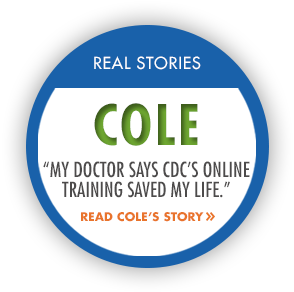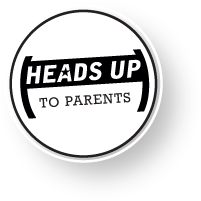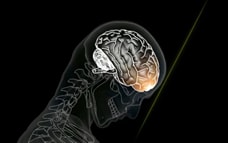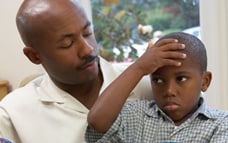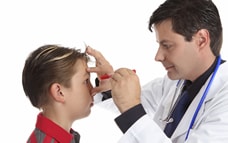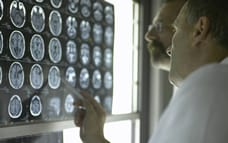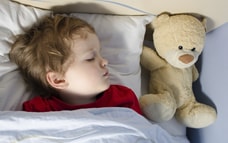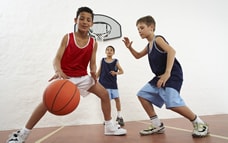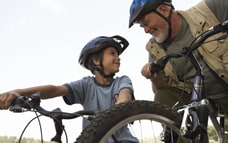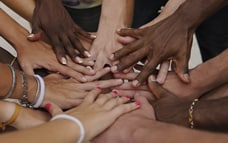Responding to a Concussion and Action Plan for Coaches
A child or teen with a concussion needs to be seen by a medical provider. If you think your child or teen has a concussion, contact his or her health care professional.
Remove From Play
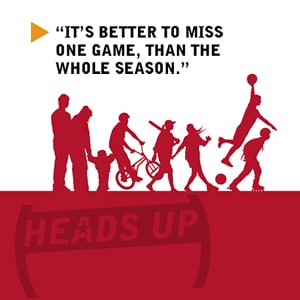
If the concussion happens while playing sports, you should also:
- Remove the child from play.
- Keep the child out of play the day of the injury and until a medical provider, experienced in evaluating for concussion, says he or she is symptom-free and it’s OK to return to play.
Children or teens who return to play too soon—while the brain is still healing—risk a greater chance of having a repeat concussion. Repeat or later concussions can be very serious. They can cause permanent brain damage, affecting your child for a lifetime.
Seek Medical Care
Most kids and teens who have a concussion are treated in the emergency department or a medical office and get to go home. Through telemedicine or telehealth services, patients may get checked for concussion symptoms and get recovery tips without needing to travel to a medical office or hospital. You may consider using telemedicine or telehealth services if you are unable to visit a healthcare provider in person. Telemedicine and telehealth services connect patients and their healthcare providers through a phone or video chat. Your healthcare provider can identify whether these services are available to you.
Patients experiencing concussion danger signs should seek care right away at an emergency department. When the injury is more serious, your child or teen may need to stay in the hospital overnight.
What to Tell the Medical Provider
Be sure to tell the medical provider if your child or teen is taking medications—prescription, over-the-counter medicines, or “natural remedies.” When possible, also write down and share the following information:
- Cause of the injury and force of the hit or blow to the head or body
- Any loss of consciousness (passed out/knocked out) and if so, for how long
- Any memory loss right after the injury
- Any seizures right after the injury
- Number of previous concussions (if any)
Tests for Concussion & Brain Injury
Your child or teen’s medical provider may do a scan of his or her brain (such as a CT scan) to look for signs of a more serious brain injury. Other tests such as “neuropsychological” or “neurocognitive” tests may also be performed. These tests help assess your child or teen’s learning and memory skills, the ability to pay attention or concentrate, and how quickly he or she can think and solve problems. These tests can help the child’s medical provider identify the effects of the concussion.
Get Written Concussion Care Instructions
Ask for written instructions from the young athlete’s health care provider on return to play. These instructions should include information about when they can return to play and what steps you should take to help them safely return to play. Before returning to play an athlete should:
- Be back to doing their regular school activities.
- Not have any symptoms from the injury when doing normal activities.
- Have the green-light from their health care provider to begin the return to play process.
If you think an athlete has a concussion, implement the HEADS UP Action Plan:
HEADS UP Action Plan
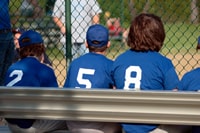
Remove the young athlete from play. When it doubt, sit them out!
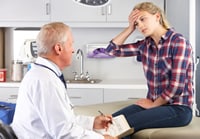
Keep a young athlete with a possible concussion out of play the same day of the injury and until cleared by a health care provider. Do not try to judge the severity of the injury yourself. Only a health care provider should assess a young athlete for a possible concussion. After you remove a young athlete with a possible concussion from practice or play, the decision about return to practice or play is a medical decision that should be made by a health care provider. As a coach, recording the following information can help a health care provider in assessing the young athlete after the injury:
- Cause of the injury and force of the hit or blow to the head or body
- Any loss of consciousness (passed out/knocked out) and if so, for how long
- Any memory loss right after the injury
- Any seizures right after the injury
- Number of previous concussions (if any)
Inform the young athlete’s parent(s) about the possible concussion, and give them the HEADS UP fact sheet for parents. This fact sheet can help parents watch the young athlete for concussion signs or symptoms that may show up or get worse once the young athlete is at home or returns to school.
Materials You Can Give to Parents
Customizable PDFs
Customize and download PDFs with your team’s colors and logo.
HEADS UP to High School Sports
Heads Up to Youth Sports

Ask for written instructions from the young athlete’s health care provider on return to play. These instructions should include information about when they can return to play and what steps you should take to help them safely return to play. Before returning to play an athlete should:
- Be back to doing their regular school activities.
- Not have any symptoms from the injury when doing normal activities.
- Have the green-light from their health care provider to begin the return to play process.
Baseline testing is a pre-season exam conducted by a trained health care professional. Baseline tests are used to assess an athlete’s balance and brain function as well as the presence of any concussion symptoms. Results from baseline tests (or pre-injury tests) can be used and compared to a similar exam conducted by a health care professional during the season if an athlete has a suspected concussion.
HEADS UP Video: Responding to a Concussion
Real Stories: Cole’s Story
